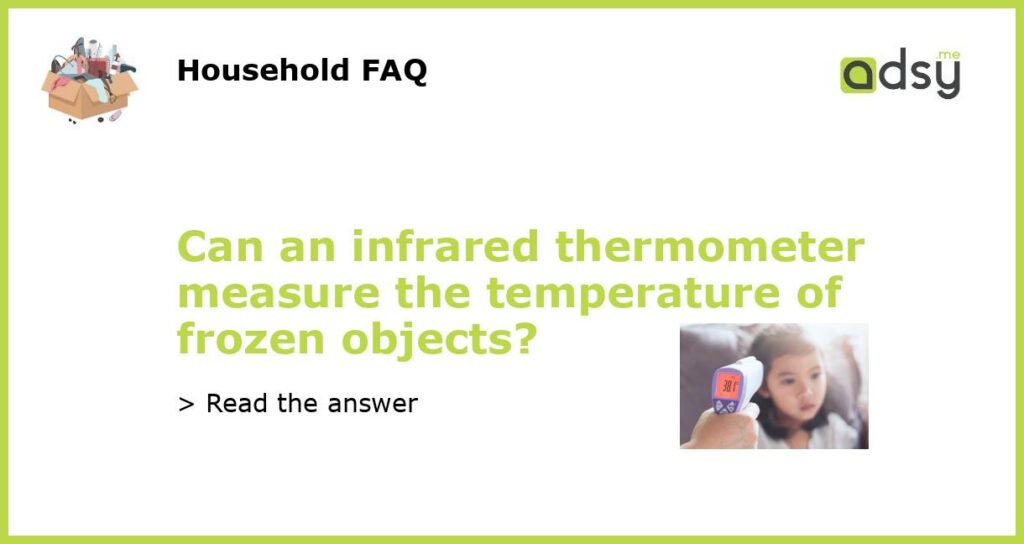Can an Infrared Thermometer Measure the Temperature of Frozen Objects?
Understanding Infrared Thermometers
An infrared thermometer, also known as a non-contact thermometer, measures temperature from a distance, without physically touching the object. It works by detecting the infrared radiation emitted by the object’s surface, converting it into temperature measurements displayed on a screen or gauge.
Limitations of Infrared Thermometers
While infrared thermometers are incredibly useful in a variety of applications, they do have some limitations. One of these limitations is their ability to measure the temperature of frozen objects accurately.
The Issue with Frozen Objects
When it comes to measuring the temperature of frozen objects, infrared thermometers can sometimes provide misleading results. The infrared radiation emitted by frozen objects tends to reflect off the surface, rather than penetrating it, which can cause inaccuracies in temperature readings. As a result, it’s essential to take this into account when using an infrared thermometer.
Tips for Measuring the Temperature of Frozen Objects with Infrared Thermometers
Despite these limitations, an infrared thermometer can still provide useful information about the temperature of frozen objects. To get the best results, however, it’s essential to follow a few tips:
- Make sure the object’s surface is clean and free of any frost or ice buildup.
- Hold the thermometer at a slight angle instead of perpendicular to the surface to reduce reflection.
- Take multiple readings from different spots on the surface to ensure accuracy.
An infrared thermometer can be a useful tool for measuring the temperature of frozen objects, but it’s essential to take its limitations into account. By following the tips above and using the thermometer correctly, you can get accurate readings that provide valuable insights into the temperature of frozen objects.






